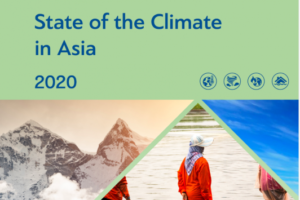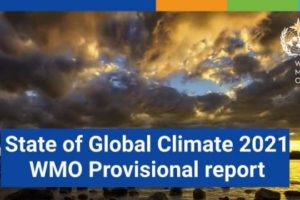Weather and climate extremes in Asia killed thousands, displaced millions and cost billions in 2020

Extreme weather and climate change impacts across Asia in 2020 caused the loss of life of thousands of people, displaced millions of others and cost hundreds of billions of dollars, while wreaking a heavy toll on infrastructure and ecosystems. Sustainable development is threatened, with food and water insecurity, health risks and environmental degradation on the rise, according to a new multi-agency report coordinated by the World Meteorological Organization (WMO).
The State of the Climate in Asia 2020 provides an overview of land and ocean temperatures, precipitation, glacier retreat, shrinking sea ice, sea level rise and severe weather. It examines socio-economic impacts in a year when the region was also struggling with the COVID-19 pandemic, which in turn complicated disaster management.
The report shows how every part of Asia was affected, from Himalayan peaks to low-lying coastal areas, from densely populated cities to deserts and from the Arctic to the Arabian seas.
“Weather and climate hazards, especially floods, storms, and droughts, had significant impacts in many countries of the region, affecting agriculture and food security, contributing to increased displacement and vulnerability of migrants, refugees, and displaced people, worsening health risks, and exacerbating environmental issues and losses of natural ecosystems,” said WMO Secretary-General Prof. Petteri Taalas.
“Combined, these impacts take a significant toll on long term sustainable development, and progress toward the UN 2030 Agenda and Sustainable Development Goals in particular,” he said.
The report combines input from a wide range of partners including the United Nations Economic and Social Commission for Asia and the Pacific (ESCAP) and other UN agencies, national meteorological and hydrological services as well as leading scientists and climate centres.


